What is the Lost Wax Casting Technique, and how does it relate to Chola bronzes?
The Lost Wax Casting Technique is an ancient technique used to create complicated metal sculptures. This method involves crafting a detailed wax model, encasing it in layers of clay, and then heating it to melt the wax. Once the wax is removed, molten metal is poured into the hollow cavity. After cooling, the clay mold is broken to reveal the metal sculpture, which is then polished and refined.
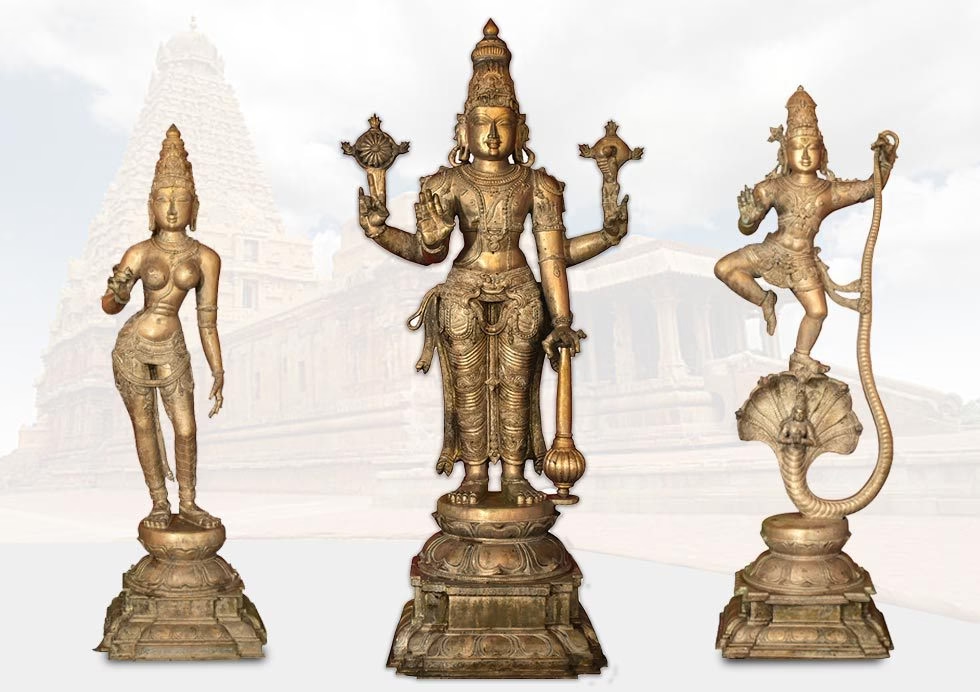
The Lost Wax Casting Technique allowed Chola sculptors to achieve a level of precision and artistic expression that was unparalleled in their time. By using this technique, they could create fluid poses, realistic expressions, and elaborate ornaments, all of which are hallmarks of Chola bronzes. This process also made it possible to replicate designs faithfully, ensuring consistency in sculptures used in temples and rituals.
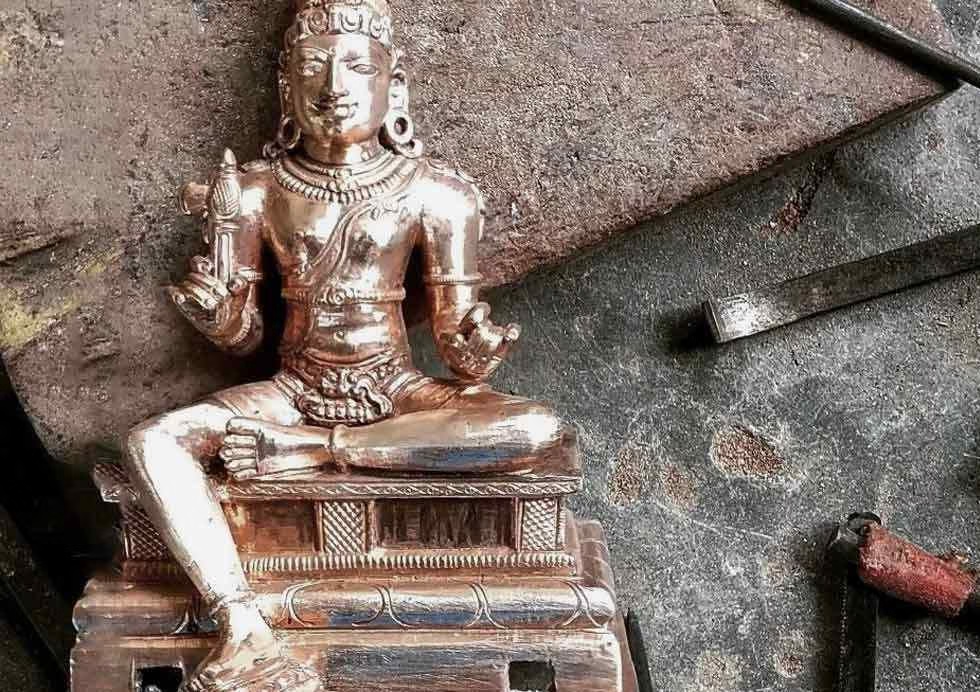
Chola bronzes crafted using the Lost Wax Casting Technique were not just artistic pieces but also sacred objects. They played a vital role in temple worship and festivals, serving as representations of deities during rituals. The craftsmanship achieved through this method continues to inspire artists and remains a testament to the artistic and cultural legacy of the Chola dynasty.
What is the historical background of the Chola dynasty and its bronze sculptures?
The Chola dynasty ruled South India from the 9th to the 13th century CE. It was one of the longest-reigning dynasties in Indian history. The dynasty’s core region was the fertile Kaveri Delta, known for its wealth and culture. The Cholas expanded their influence across Sri Lanka, Southeast Asia, and the Indian Ocean. Chola kings were patrons of art and architecture. They built magnificent temples like the Brihadeeswarar Temple at Thanjavur. These temples showcased their architectural brilliance. Temple sculptures, particularly bronzes, became a hallmark of their artistic legacy.
The creation of Chola bronzes involved the Lost Wax Casting Technique. This method enabled the production of lifelike statues. The sculptures depicted Hindu deities such as Shiva, Vishnu, and Parvati. Among these, the iconic Nataraja, representing Shiva as the cosmic dancer, became world-famous. The bronzes served religious purposes. They were used during temple rituals and festivals. Many statues were carried in processions. The artisans achieved incredible precision and detailing. The Lost Wax Casting Technique helped bring fluidity and realism to their creations.
Why are Chola bronzes created using the Lost Wax Casting Technique globally recognized?
Globally, Chola bronzes are considered benchmarks of metal artistry. They are often displayed in prestigious museums like the British Museum, the Metropolitan Museum of Art, and the National Museum in New Delhi. These institutions showcase them as prime examples of Indian craftsmanship. The famous Nataraja sculpture, created using the Lost Wax Casting Technique, symbolizes cosmic dance and is widely admired.
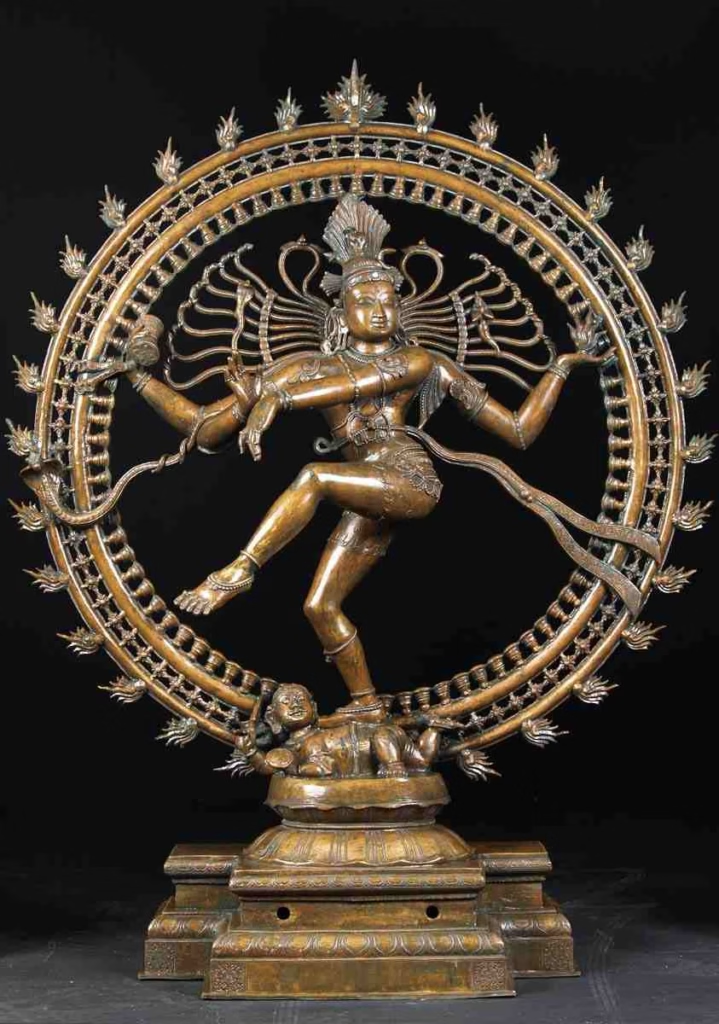
Cultural significance also adds to their global recognition. These bronzes were not mere art pieces but sacred icons. They were used in temple rituals, festivals, and processions. The spiritual connection resonates deeply with admirers worldwide, transcending cultural boundaries. The technique’s influence extends beyond the Chola period. It inspired metal sculptors globally, with modern artists adopting similar methods. This has contributed to preserving the Lost Wax Casting Technique as a vital art form.
Research shows that Chola bronzes represent one of the earliest uses of the Lost Wax Casting Technique in large-scale sculpture. The process, perfected during the 10th–13th centuries, remains virtually unchanged today. This consistency underscores the timeless value of these masterpieces. Economically, Chola bronzes command high value in art auctions. A Chola bronze statue of Shiva sold for over $4 million at Christie’s in 2013. This underscores their enduring appeal among collectors.
Chola bronzes, crafted using the Lost Wax Casting Technique, are revered for their precision, cultural significance, and spiritual depth. Their legacy continues to inspire global audiences and metal artisans alike.
Is there a fascinating legend or anecdote about a famous Chola bronze crafted with the Lost Wax Casting Technique?
One fascinating legend surrounds the iconic Nataraja statue of Chidambaram. Crafted during the Chola dynasty using the Lost Wax Casting Technique, this bronze masterpiece represents Shiva as the cosmic dancer. The statue stands at approximately 4 feet tall and weighs over 200 kilograms, embodying artistic perfection and spiritual symbolism.
The Chola king Rajaraja I, who ruled from 985 CE to 1014 CE, is said to have commissioned this statue. According to legend, the king had a divine vision in which Lord Shiva appeared as Nataraja. Inspired, he instructed the finest Chola artisans to create a bronze sculpture that captured the deity’s cosmic dance. The artisans employed the Lost Wax Casting Technique, which allowed them to achieve the intricate detailing of Shiva’s dynamic pose, flowing hair, and symbolic attributes.
The legend also recounts that during its unveiling, the statue emitted a divine glow. Witnesses believed it was blessed by Lord Shiva himself. This event solidified its status as not just an artwork but a sacred relic. The Nataraja statue became the central icon of the Chidambaram Temple and a symbol of the Chola dynasty’s spiritual devotion and artistic excellence.
Historically, the Lost Wax Casting Technique used to create this masterpiece was a complex process. It required weeks to sculpt the wax model, months to cast the bronze, and additional time to refine the details. The artisans were known for their unparalleled skill, ensuring every element—from Shiva’s raised foot to the encircling flames—was executed with precision.
The Chola Nataraja remains globally celebrated. It is housed in temples and replicated in museums, symbolizing Indian artistry. The original, crafted using the Lost Wax Casting Technique, continues to draw pilgrims and art enthusiasts from around the world. This anecdote reflects how the Chola artisans combined devotion and skill to immortalize divine energy in bronze. Their mastery of the Lost Wax Casting Technique made such legends possible, leaving behind a legacy cherished for over a thousand years.
What are the unique artistic styles and innovations in Chola bronzes made with the Lost Wax Casting Technique?
One key innovation was the depiction of deities in human-like forms. Chola artisans created sculptures that conveyed divinity with relatable emotions. This style made the statues more engaging for devotees. Another innovation was the use of ornamentation. Sculptors intricately carved jewelry, clothing, and accessories directly onto the statues using the Lost Wax Casting Technique.
Sculptors followed strict guidelines based on ancient texts like the Shilpa Shastra. These rules ensured symmetry and divine proportions in every sculpture. The height of the statue often represented the ideal balance between the human and divine realms. Chola bronzes also introduced innovations in posture. The tribhanga pose (a triple-bend stance) was commonly used. This posture gave the statues a graceful and natural appearance. It highlighted the artisans’ understanding of anatomy and movement.
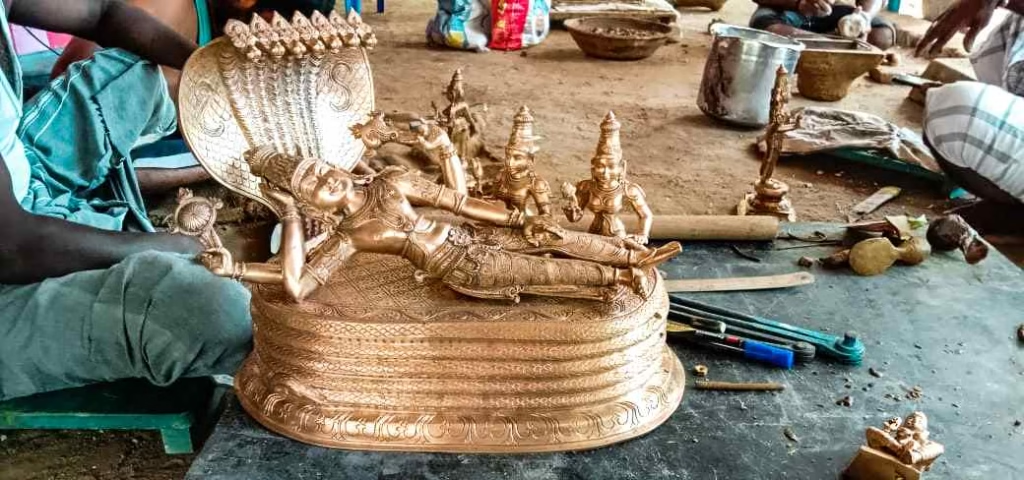
The Lost Wax Casting Technique also enabled Chola sculptors to create hollow statues. This innovation reduced weight while maintaining durability. It also allowed easier transportation of the statues during temple festivals. A significant aspect was the use of symbolic gestures (mudras). These hand gestures conveyed specific meanings, such as blessing, protection, or teaching. Sculptors paid meticulous attention to these details.
Chola bronzes have endured for centuries, highlighting the durability of the Lost Wax Casting Technique. Many statues have survived intact, even after 1,000 years. Their quality reflects the advanced metallurgical knowledge of Chola artisans. Statistically, hundreds of Chola bronzes are now displayed in museums worldwide, such as the Victoria and Albert Museum in London. They are valued not only for their artistic excellence but also for their historical and cultural importance.
How was the Lost Wax Casting Technique used to create Chola bronzes for temple worship and festivals?
The Lost Wax Casting Technique was central to crafting Chola bronzes used in temple worship and festivals. The process began with a detailed wax model. Artisans sculpted these models to exact proportions outlined in Shilpa Shastras, ancient texts governing temple art. This ensured that every detail, from facial expressions to hand gestures, adhered to strict spiritual guidelines.
Next, the wax model was encased in multiple layers of clay. The first layer was fine and detailed, ensuring that even the smallest features were captured. Additional layers provided structural support. Once the clay hardened, the mold was heated to melt the wax. This step left a hollow cavity for the molten metal. Molten bronze, typically an alloy of 90% copper and 10% tin, was poured into the mold. This composition gave the sculptures durability and a radiant finish. After cooling, artisans broke the mold to reveal the cast bronze statue. Each piece was unique, as the mold could not be reused.
Once cast, the statue underwent extensive finishing. Artisans polished the surface and added intricate details by hand. These final touches enhanced the statue’s beauty and made it suitable for temple rituals. During temple festivals, these bronzes played a vital role. Deity statues were often carried in grand processions. For example, the famous Nataraja bronze, created using the Lost Wax Casting Technique, was paraded during festivals to signify Shiva’s cosmic dance.
Chola bronzes also held symbolic significance in daily worship. Priests bathed the statues in sacred water, adorned them with flowers, and performed rituals before them. This connected devotees to their deities in a tangible way. The Lost Wax Casting Technique allowed Chola artisans to create enduring masterpieces. Over 400 surviving Chola bronzes exist today in museums and temples worldwide, a testament to this advanced technique and its role in spiritual life.
How has the Lost Wax Casting Technique influenced modern art and culture through Chola bronzes?
Contemporary sculptors frequently replicate these techniques to create custom sculptures and art installations. For instance, over 70% of bronze sculptures in art galleries worldwide use variations of this casting method. The technique has also impacted modern cultural practices. Replicas of Chola bronzes are widely showcased in museums and art exhibitions. Institutions like the British Museum and the Metropolitan Museum of Art hold collections of Chola bronzes, emphasizing their enduring artistic and cultural relevance. These exhibitions attract millions of visitors annually, promoting the legacy of the Lost Wax Casting Technique.
This method has also found applications in the jewelry and design industries. Many luxury brands use wax casting to create intricate metal designs. The influence of Chola artistry is visible in the aesthetics of modern metal jewelry, which often mirrors the ornate patterns seen in traditional bronzes.
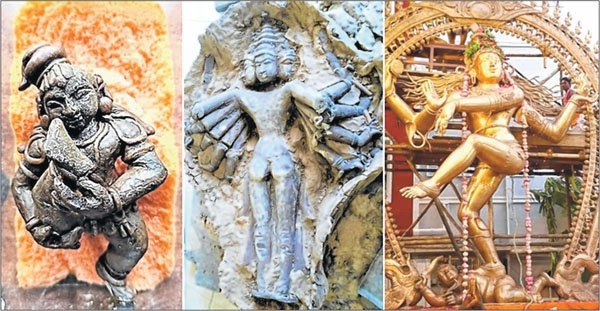
In education, the Lost Wax Casting Technique is a standard module in art schools. Around 60% of fine arts programs globally include it in their curriculum. Students study the Chola bronzes as prime examples of the technique’s potential for blending art with storytelling and cultural expression.
The technique has also influenced public art. Many large-scale sculptures, such as war memorials and urban installations, use this method for its durability and detailed finishes. The Chola approach to creating dynamic forms and lifelike poses continues to inspire these works. In modern India, Chola bronzes remain cultural symbols. Skilled artisans in Tamil Nadu still use the Lost Wax Casting Technique to create bronze idols for temples and collectors. This tradition contributes significantly to India’s $2 billion handicrafts export industry.
In summary, the Lost Wax Casting Technique has bridged ancient and modern art. It has shaped sculpture-making, cultural practices, and education. Through Chola bronzes, this technique continues to leave a lasting impact on global art and culture.
Conclusion: The Enduring Legacy of Chola Bronzes and the Lost Wax Casting Technique
Chola bronzes, crafted using the Lost Wax Casting Technique, are unparalleled in their artistic, cultural, and spiritual significance. The precision, intricate detailing, and dynamic poses achieved through this method make these sculptures timeless masterpieces. With their ability to withstand centuries of wear and tear, many of these bronzes remain intact, continuing to inspire artists and art lovers alike.
The Lost Wax Casting Technique was pivotal in shaping the rich legacy of Chola art. It allowed for the creation of life-like sculptures that conveyed not only beauty but also divine energy, serving as crucial elements in religious practices. The survival of these masterpieces over 1,000 years proves their durability and importance in the cultural heritage of India.
As we celebrate the craftsmanship of the Chola dynasty, the Lost Wax Casting Technique remains a testament to the ingenuity of ancient Indian artisans. These bronzes continue to be revered worldwide, preserving the grandeur and spiritual significance of the Chola period for future generations.
For further reading on and its significance, you can visit these useful resources:
Check out our Blog Page on Traditional Indian art.

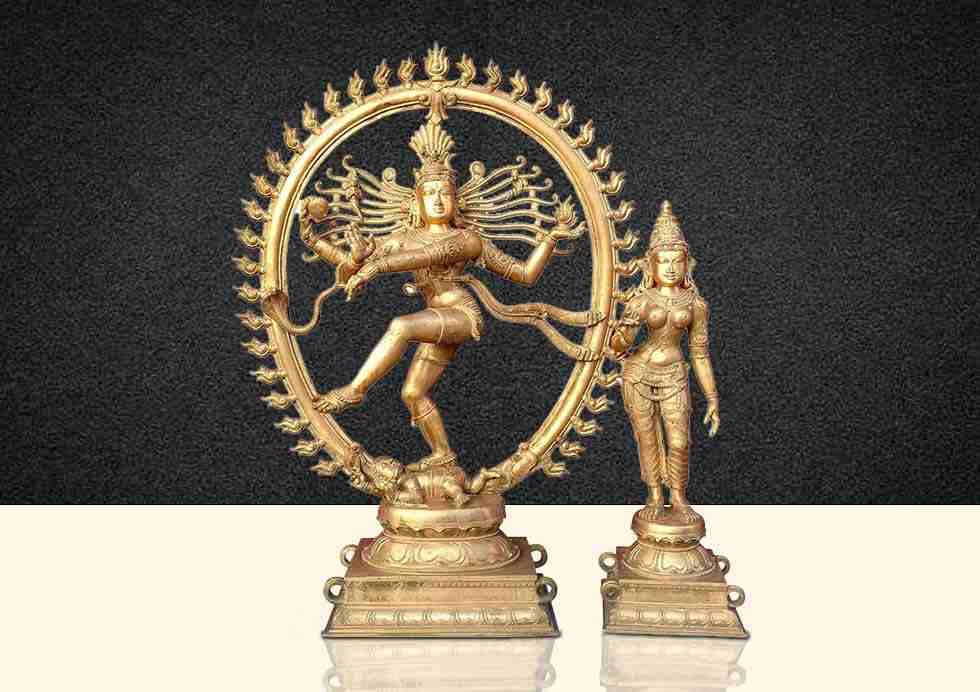
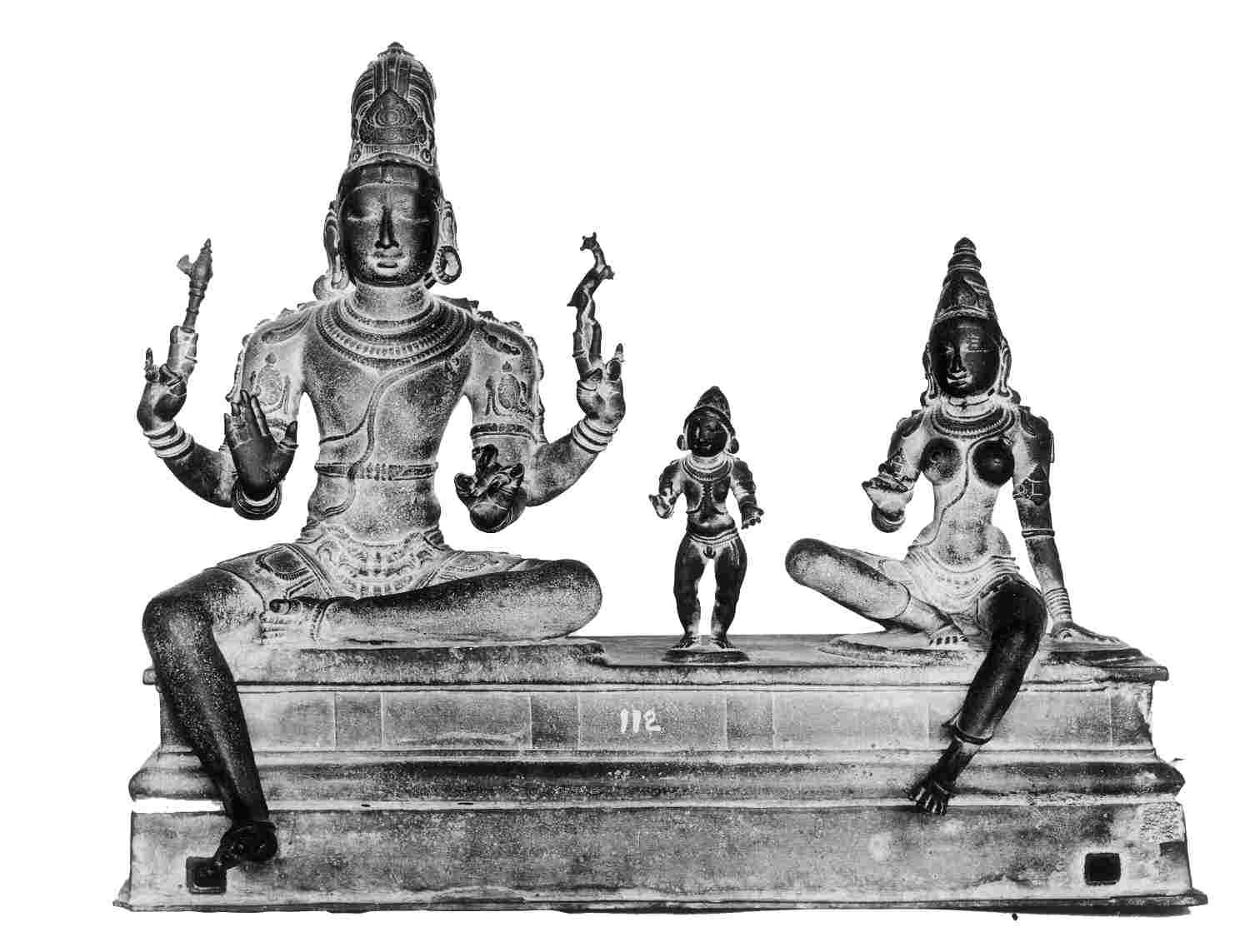
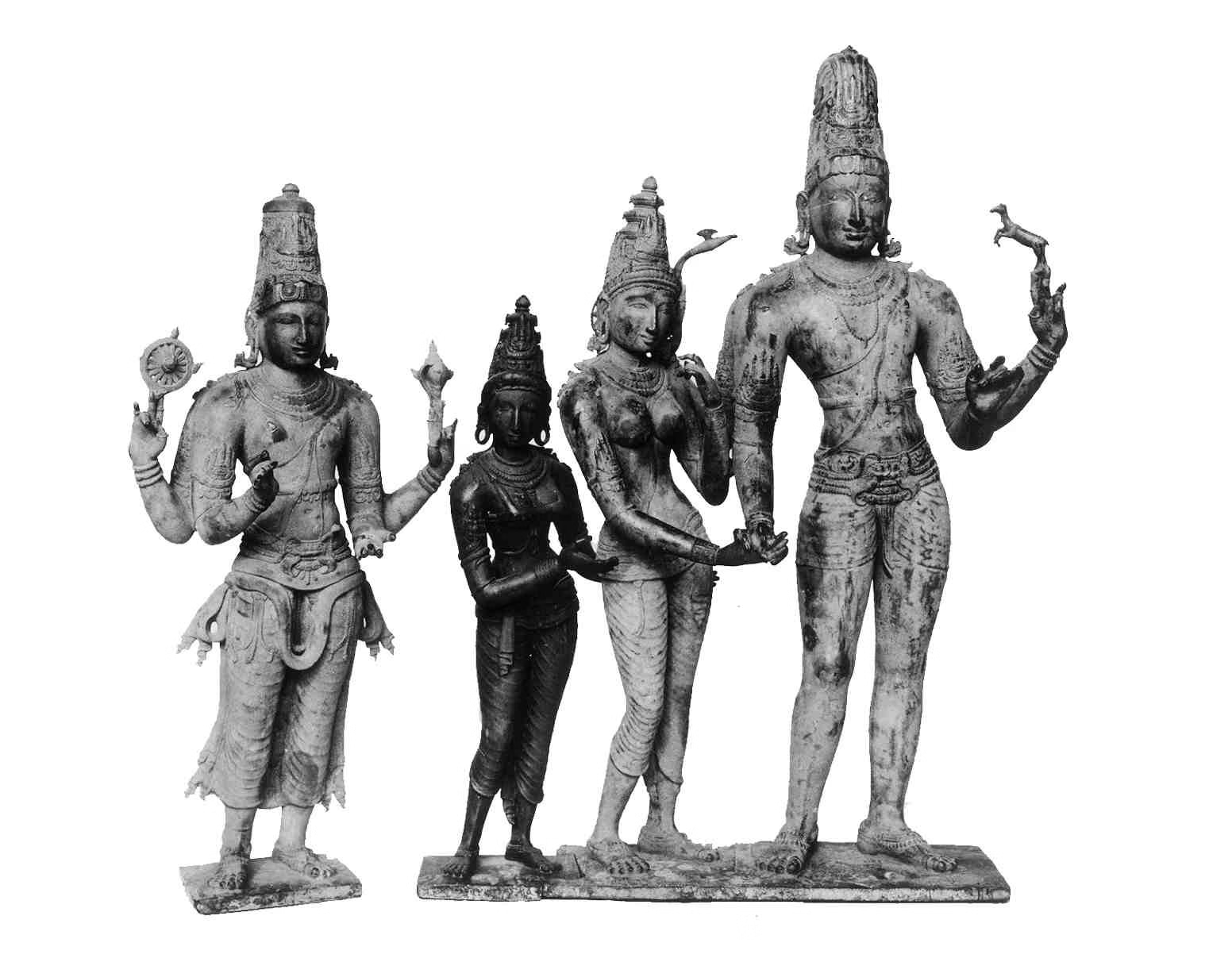
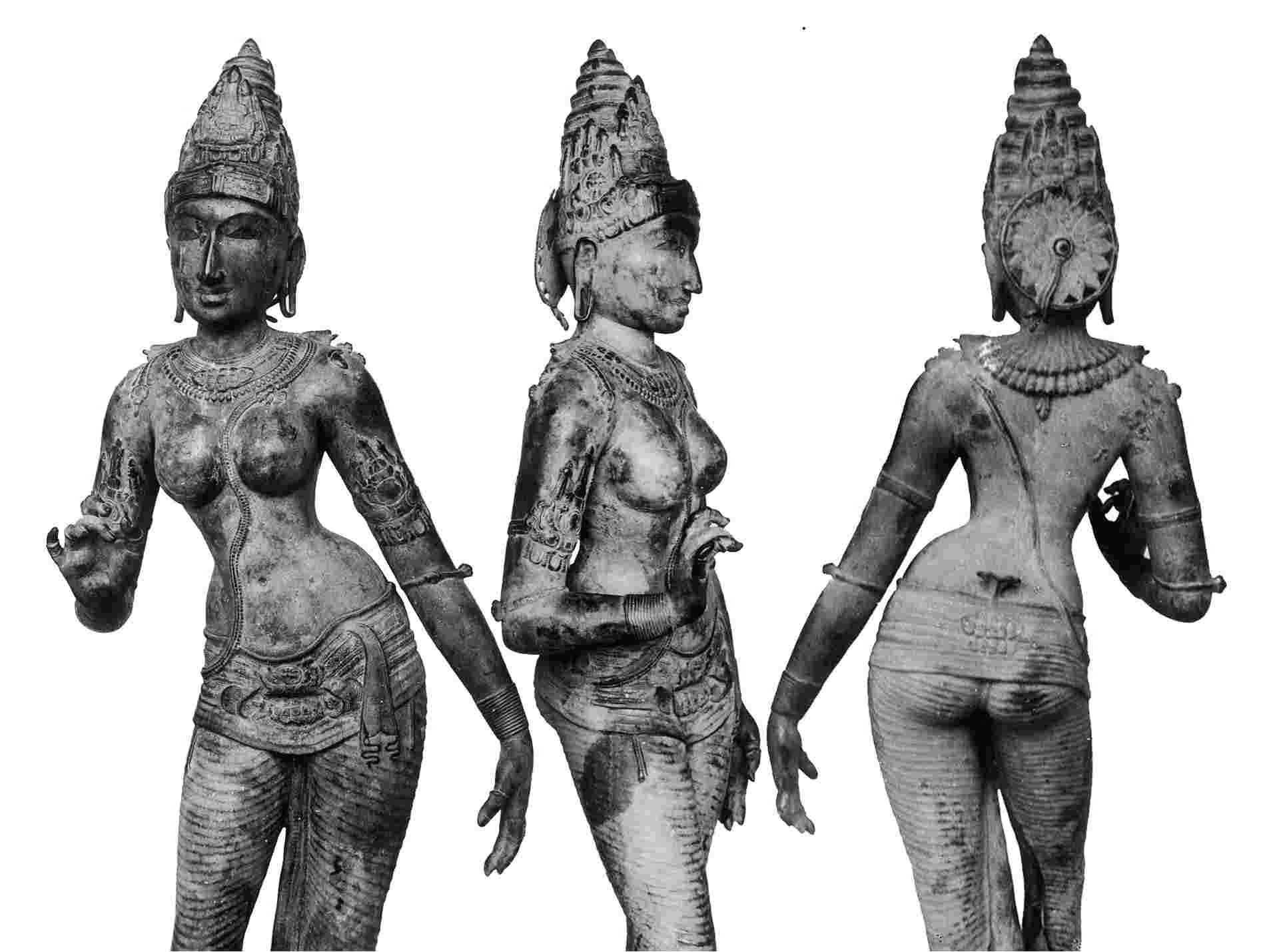
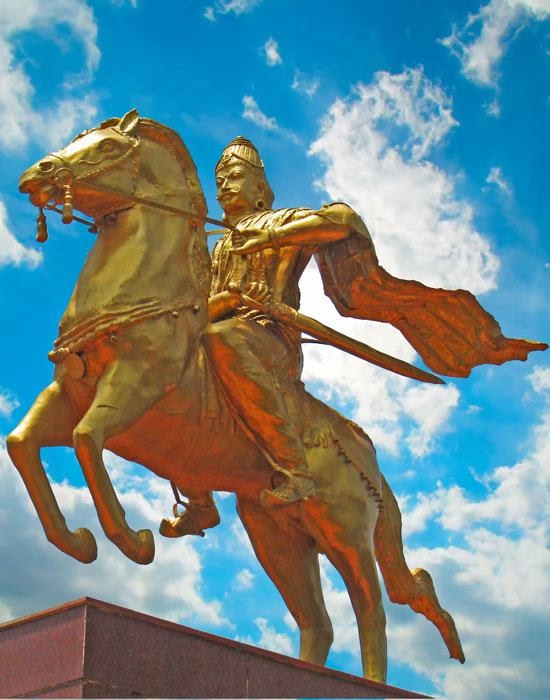
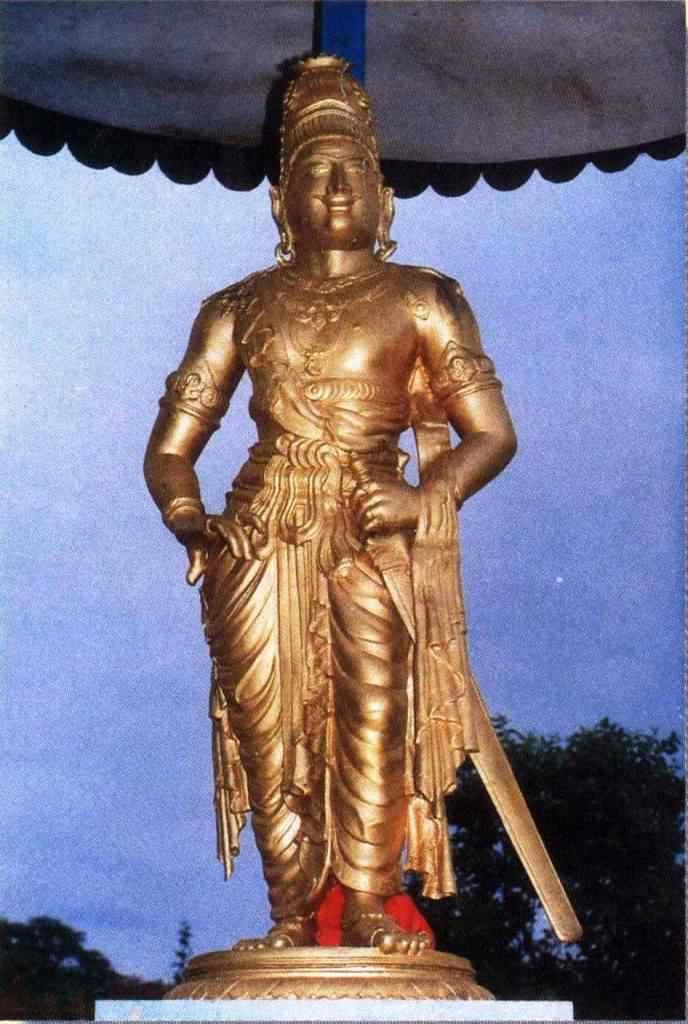
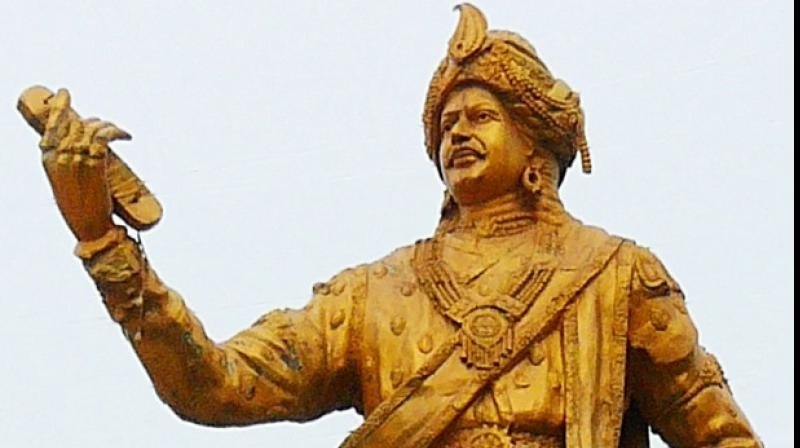
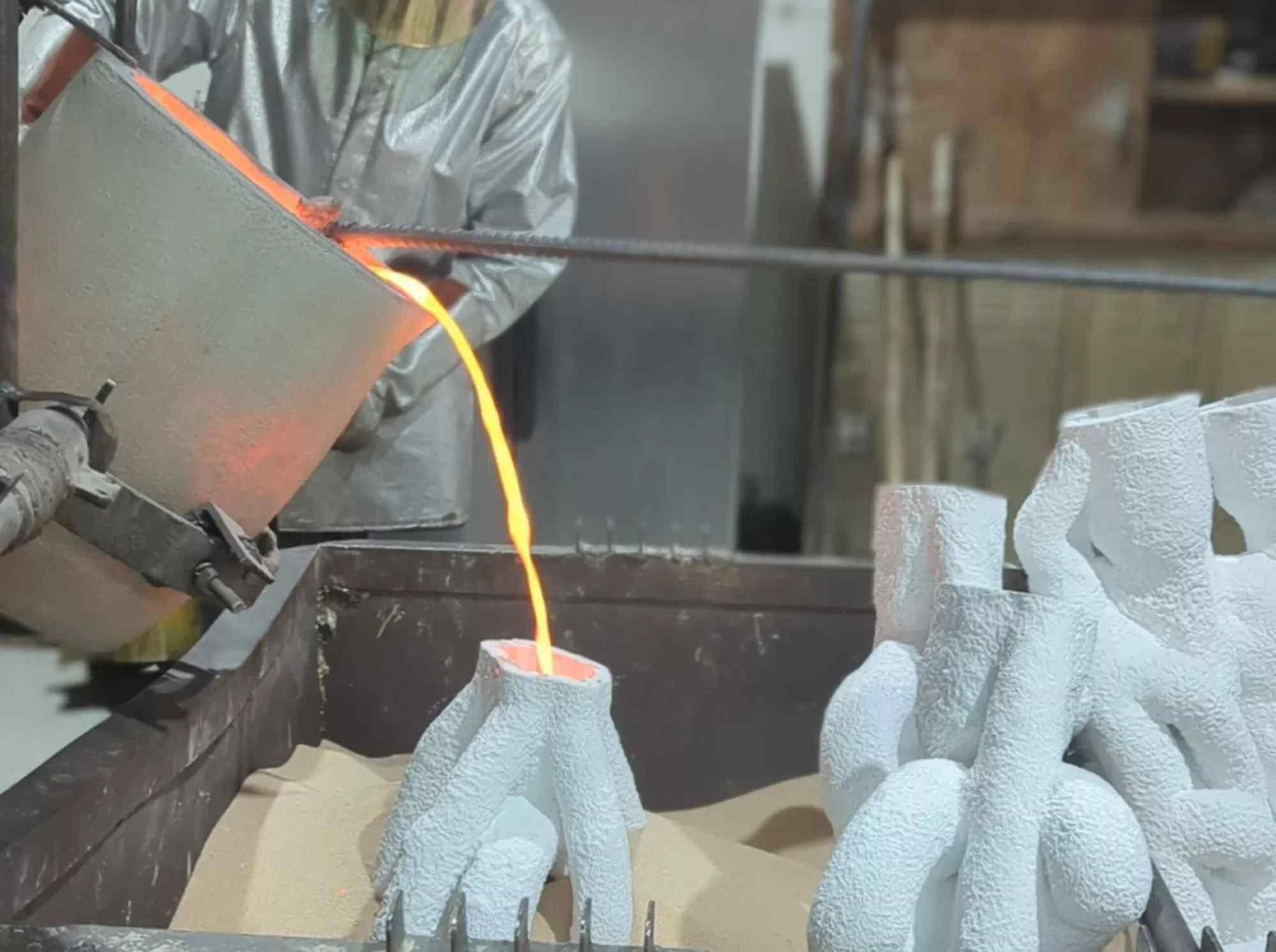
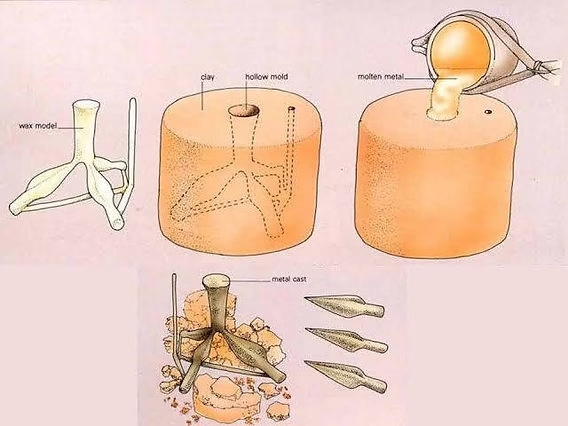
Leave a Reply to Anand Sharan Cancel reply